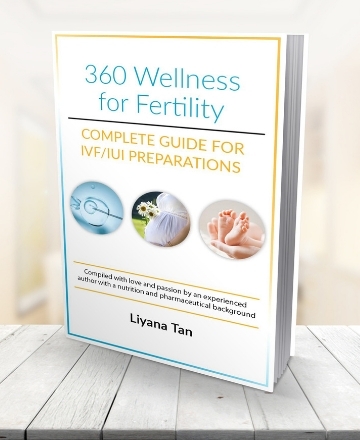1. Success Rates of IVF
Since the first test tube baby was born in 1978, data from the International Committee for Monitoring Assisted Reproductive Technologies (ICMART) shows that there have been over three million IVF babies born across 52 countries. The latest report states that there are about 122,000 IVF babies born per year in the United States and Europe. However, the same report indicates that there were almost 600,000 IVF cycles in that same year. What happened to the 478,000 other cycles that did not result in a baby?
Although this promising technology has helped a number of couples conceive, the reality is that IVF treatments do not work for everyone. While a number of IVF cycles do result in a pregnancy, many of these pregnancies do not get carried to term for various reasons. So, what exactly are your chances of conceiving a baby through IVF? The answer to this question varies depending on your age, your type of infertility, the number of cycles of IVF you will be electing, and other factors. For the purposes of this section, we will define “success rate” as the “take- home baby rate” or the live birth of at least one infant.

2. Factors Affecting Success Rates
Age
There are a number of factors that influence the success rate of IVF, with the woman’s age being the most important. As you might have seen from the table above, women younger than 35 have the highest percentages of pregnancies and live births; on the other hand, women older than 40 have the lowest success rates and the highest percentage of cancellations. This happens because the quality of a woman’s eggs declines as she gets older. By the time a woman reaches her late thirties and early forties, the remaining eggs in the ovaries are less capable of getting fertilized and less capable of implanting. The embryos that do implant despite the effects of age are at risk for unexplained miscarriages due to genetic defects – nature’s way of letting go of an embryo that cannot grow properly. By the time a woman is 44, IVF babies are almost never born using her own eggs.
Number of Cycles
Another factor affecting IVF success rates is the number of previous treatments. IVF and other methods of ART are not always a single shot affair; pregnancy may not happen during your first try. Most clinics recommend plans that incorporate three or four IVF cycles because the chances of getting pregnant and giving birth (also called the cumulative conception rate and cumulative live birth rate, respectively are significantly higher when more than one cycle is elected.
What this means is that with enough IVF cycles, the law of averages often pays off. The chances of conceiving and carrying the pregnancy in the second IVF cycle will not decrease just because the previous cycle failed. In fact, the chances of conceiving during the second cycle might even be greater. By figuring out what went wrong in the previous cycle, your doctor can often adjust the treatment and make new recommendations for aftercare. Of course, you need to set a limit as to how many cycles you will undertake – after six failed IVF cycles, the take-home baby rate drops significantly.
Live Birth Rates, Age, and Number of Eggs Transferred
A study published in Fertility and Sterility show that for 2,708 IVF cycles of 2,056 patients, the cumulative conception rate was at 75% whereas the cumulative live birth rate was at 66%. The rates varied by age and by the number of eggs retrieved – women younger than 35 had a cumulative conception rate of 83% whereas those older than 35 had a conception rate of 63%. The number of eggs transferred also played a factor in the success; when less than 5 eggs were retrieved among women older than 35, their cumulative conception rate fell to 33%. The effects of age can sometimes be countered by increasing the number of embryos per transfer – around 2 for women under 30 and 3 for women over 35. The more embryos transferred, the more likely the cycle will result in at least one live birth. However, this also increases the risk of a multiple pregnancy, which can be detrimental to the health of both the mother and the babies.
So, make this decision carefully and consult with your doctor before the big day of embryo transfer arrives.

Type of Infertility
The type of infertility experienced can also affect the outcome of an IVF cycle. Below is a table of cycles resulting in live births arranged according to infertility type, based again on the SART report. According to the data, IVF seems most effective for male factor infertility, as well as for conditions that prevent ovulation and implantation (ovulatory dysfunction and endometriosis). IVF seems fairly successful at overcoming unexplained infertility as well.
[table id=40 /]3. Finding a Clinic That is Right for You
Now that you’ve decided on an IVF treatment, the next step is to find a clinic that can help you achieve your dreams of having a baby. Finding a fertility clinic will take time and research because a good clinic never comes in one size that fits all. The fertility clinic you will eventually choose should have services tailored to your specific needs, qualified doctors, and treatment costs you can afford.
4. Costs and Payment Options
Although your decision should not be based on price alone, the cost of treatment and payment options available are important to consider. For the IVF to be feasible, the clinic has to provide payment methods that you can subscribe to. Ask about the whole procedure cost (including cost of drugs), and how much money you need to pay if your cycle gets cancelled. Be careful about clinics that have money-back guarantees if a cycle fails; you might be presented with more aggressive treatments than you are comfortable with.
It’s not enough for you to look at the website or give the clinic a call; you have to do an ocular inspection before giving the final verdict. Look at a wide range of clinics while making your decision. Many fertility clinics offer open houses or special sessions where you can have a chat with one of the doctors. These sessions are not consultations per se, but about more practical things like the clinic’s availability, clinic hours, or the number of times you need to return for a session. You might want a clinic that allows you to come in for an ultrasound without taking a day off work.
In the United States, you can expect to pay as much as $12,400 for an IVF cycle. It’s a lot of money to ask, but IVF is a delicate medical procedure that involves specialized equipment, sophisticated laboratories and trained professionals. Even though infertility affects thousands of Americans, treatments only make up .03% of health care costs. Most couples who got diagnosed with fertility problems late in life did not account for IVF treatments in their financial plans. As a result, they may end up spending their life savings or foreclosing their home. You can prevent this from happening by taking charge of your budget and easing the burden through patient financing programs.

Determine your Budget
Before signing the dotted line, talk to your spouse about how far you’re willing to go. Nobody expects the IVF cycle to end in failure, but it does happen – and the second time is going to be just as expensive as the first. Ask your doctor how many cycles you can expect to have, as well as your chances of succeeding. Decide up to how many cycles you should try before calling it quits and trying a different approach to parenthood.
It helps to make a financial plan to help you work with your budget and life goals. A financial plan is a comprehensive roadmap that deals with achieving long and short- term goals such as educational funding, retirement, estate planning, cash flow, insurance, and liabilities.
Now that you’ve established your budget, you need to stick to it and make cost a factor in choosing your doctor. While looking at clinics, ask for a list of procedures and any corresponding costs. Follow up with some questions:
- Are there any prerequisite consultations, tests, and lab work? Are these covered by the treatment cost?
- Does the treatment cost include medication and/or fertility drugs that might be used during treatment?
- How much should be paid in advance? What methods of payment are available?
- Are there costs for embryo storage and cryopreservation?
5. Communicating with Friends, Family and Work Relations
An IVF is more than just a medical treatment. For couples trying to achieve parenthood, this procedure is also an emotional and deeply personal experience. It’s perfectly normal to feel hesitant about sharing the secret of IVF with your family, friends and co-workers. After all, infertility is the exception rather than the norm; you may fear you will be bombarded by all sorts of questions or unsympathetic responses. However, keeping silent about your treatment will only add stress to an already stressful and emotional situation. Deciding who, when, and how to tell the news may be the trick to receiving the support and encouragement you need.
It’s important to be very selective about whom to share the news about your IVF. You may be surprised if the people you expect to be most supportive may end up showing insensitivity and ignorance about the procedure. They might say things like, “Why not just adopt? So many kids need homes.” Or, “Why do you need another child? You already have a healthy son/daughter!” These types of responses discourage us from sharing our experience with others. You might find a more sympathetic ear in someone who has had miscarriages or experience with fertility problems; they’ll be able to understand the impact of this loss in your life. A parent or a close friend who you know is non-judgmental may also be a good person to turn to. Having someone you can talk to about your anxieties, fears, and hopes about the IVF procedure can make a big impact on your ability to cope
 Prepared by: Liyana Tan
Prepared by: Liyana Tan
If you are interested to obtain the FULL guide on IVF to increase you chances, you can have the ebook that is written and compiled by a food & pharmaceutical chemist. Click on IVFSecretcode.com to know her full stories and get inspired.
Well here is just some sneak peak of info that you will be having from the ebook to increase you chance of IVF success
(pg. 19-43)
We will be discussing the male and female reproductive system, understanding how everything works, and understanding what infertility really means. This will include male and female disorders.
(pg. 48-63)
This is where I address the habits you currently have that wreak havoc to your fertility. These are habits you may not even realize you have! Trust me! I was doing a bunch of these until I discovered and documented these findings! You’ll be shocked!
(pg. 77)
This is the good stuff! I would even say this is most crucial part of my book, as it discusses rituals that can be done and must be done daily.
I show you with pictures exactly what to do for ONLY 10 minutes that will literally increase the rate of success by double!!
(pg. 113)
This is where we get into herbs and supplements that are scientifically proven to increases the chances to success in IVF.
(pg. 128)
Here I dive into the whole process of IVF. The details here is important to give you an exact overview of what you will be going through. It will save you HOURS of consultation time with your doctors!
And on top of all that…
She will also guide you step-by-step through understanding IVF risks and medical treatment that help to improve chances of IVF success.
Here are some other things you’ll learn!
What to do if you’ve had multiple miscarriages.
A look at your biological clock
How long you really have before it’s “game over”
Hint: it’s not as bad as you might think.
The 9 unhealthy habits that wreak havoc on your fertility
Besides the obvious “don’t do drugs and alcohol.
A surprising list of common products that are murdering your chances at a baby.
You probably use #4 every day!
For all you athletic women out there.
The 2 exercises you should NEVER do if you want to get pregnant.
The hidden dangers behind a “relaxing soak”.
They could be costing you your happy future.
Just 3 minutes a day of *this* gentle activity will free your brain to focus on procreation while making your stress levels plunge!
The 3,000-year-old technique that can balance out hormone levels and eliminate infertility pain for good
How a common Eastern practice can boost your pregnancy chances by 95%!
And many more…
 Kaboutjie SA Mommy Blogs by Lynne Huysamen
Kaboutjie SA Mommy Blogs by Lynne Huysamen





The post was very informative and well explained, Thank you for providing valuable information, keep posting informative Articles like this.
It’s a pleasure, I am glad you enjoyed the post!
Great post
I have a friend who does not have eggs anymore and she asked foe to give her one of mine. So my question is, is it possible that a woman’s body is incapable of produci g eggs? Especially since she is very young? Oh and I agreed to donate mine.
That is amazing you are willing to do that Kamo. I don’t really know too much about that but according to Cleveland Clinic “There are many reasons why a woman may not ovulate (release an egg) regularly. Hormonal imbalances, a past eating disorder, substance abuse, thyroid conditions, severe stress and pituitary tumors are all examples of things that can affect ovulation.”
Thank you so much for the info. I would do anything to be able to have a child of my own, however I can not afford IVF😔
Very interesting and very helpful.
I can just imagine how it must be not to be able to conceive. There was a time that I thought I was unable to and it was a huge emotional experience.